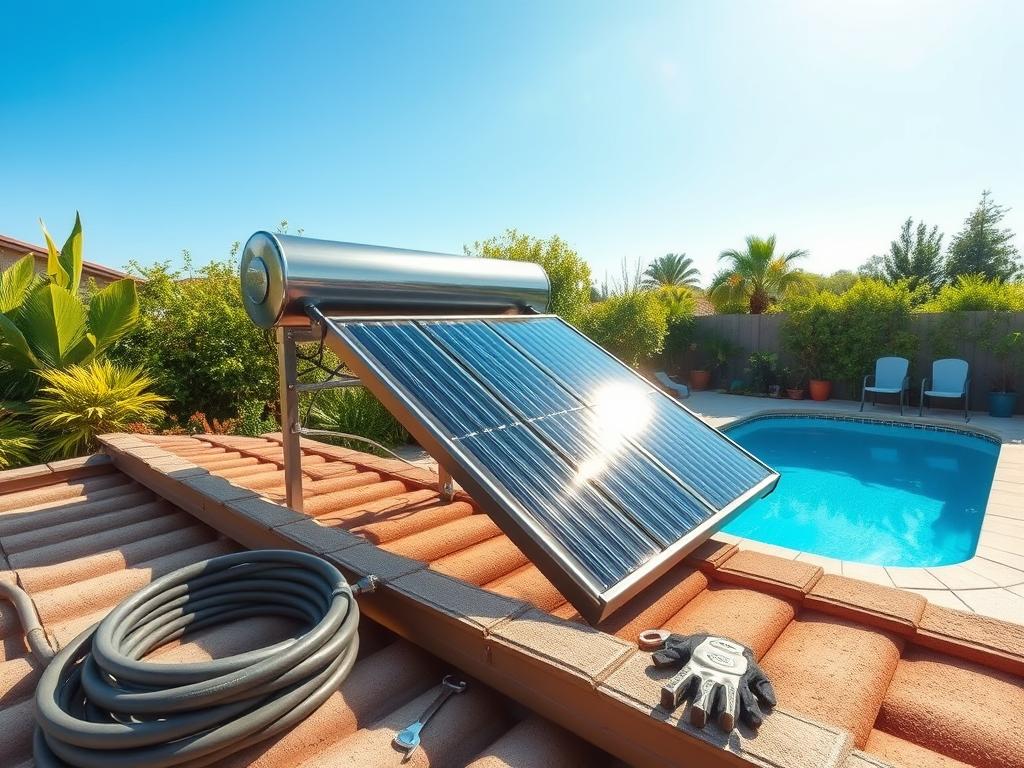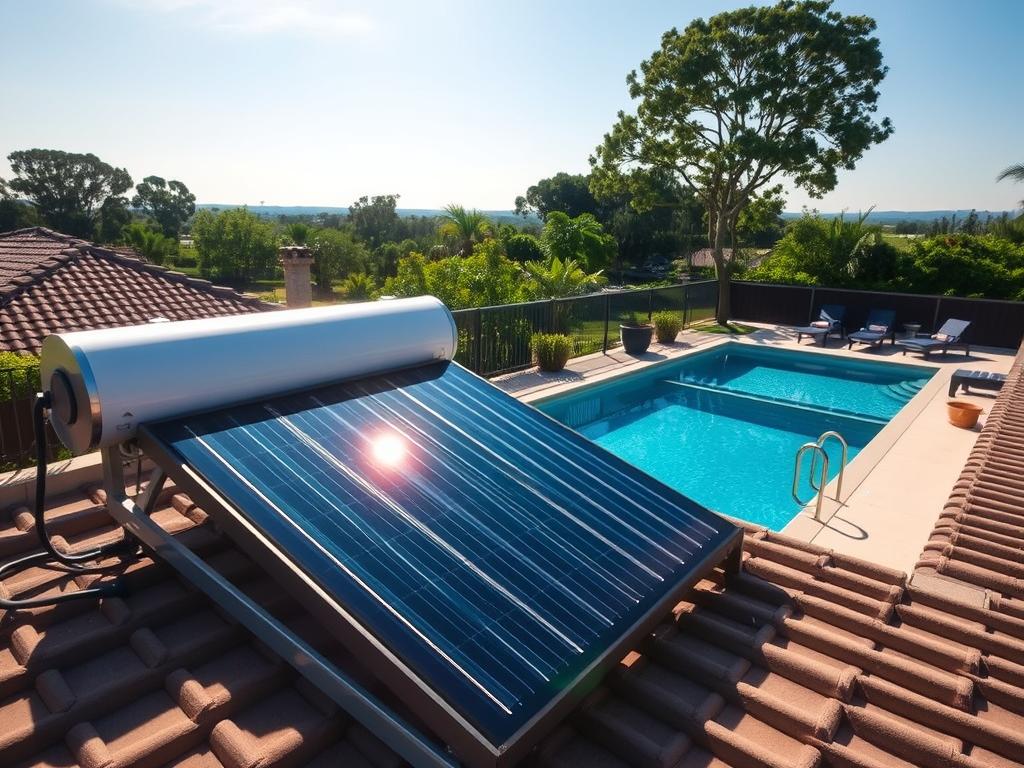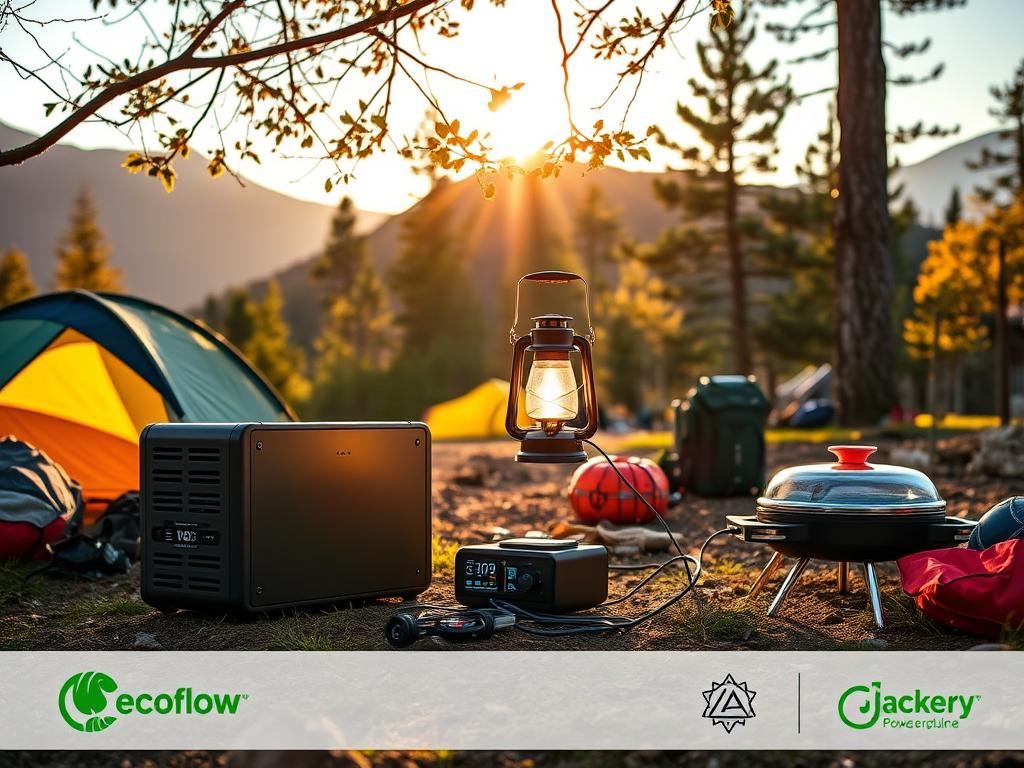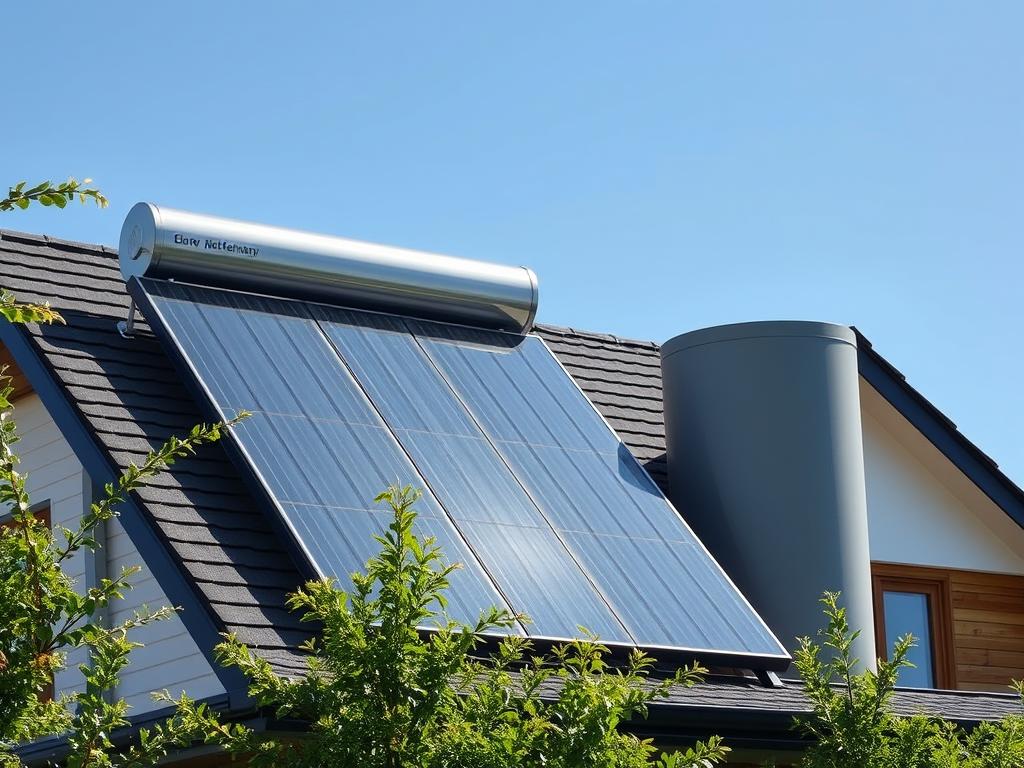As the sun warms our backyards, we all dream of a cool pool. But did you know the sun can also heat your pool? This can make your pool season longer and cut down on energy costs. Solar water heaters are changing how we heat our pools.
In this guide, we’ll explore solar pool heating systems. We’ll look at the parts, benefits, and how to pick and install the right one for your home. Whether you love pools or are new to solar, this guide will help you make a smart choice. Enjoy your backyard oasis all summer long.
Key Takeaways
- Solar pool heating systems are a cost-effective and energy-efficient solution for extending the swimming season.
- These systems typically include a solar collector, filter, pump, and flow control valve, circulating pool water through the solar collector to be heated by the sun.
- Solar pool heaters are competitive with gas and heat pump pool heaters, offering low annual operating costs and significant energy savings.
- Solar pool heating systems can also cool pools during peak summer months by circulating water at night.
- Proper installation and positioning of the solar collector are crucial for maximizing the system’s efficiency and performance.
Understanding Solar Pool Heating Systems and Their Components
Solar water heating systems are great for warming up your home pool. They use the sun’s energy to heat your pool water. This makes them both efficient and affordable.
The solar collector is the core of these systems. It’s where your pool water goes to get warm. You can choose from unglazed or glazed collectors. Unglazed ones work best when it’s not too cold, while glazed ones can handle colder weather.
These systems also have a filter to clean the water before it warms up. A pump circulates the water, and a valve controls the flow. All these parts work together to heat your pool water using the sun’s power.
“Solar pool heating systems typically cost between $2,500 and $4,000 to buy and install, with a payback period ranging from 1 to 7 years, depending on local fuel costs and available solar resources.”
Knowing about the parts of a solar pool heating system helps you choose the right one. Whether you pick an unglazed or glazed collector, it will make your pool warmer. This way, you can enjoy swimming for longer periods.
Benefits of Solar Water Heater for Heating Home Swimming Pools
As a pool owner, I’ve found solar water heaters to be amazing. They cut my energy costs and let me swim longer. Plus, they keep my pool water at the perfect temperature.
Using a solar water heater saves a lot of money. In sunny places like Arizona, you can cut your water-heating bills by up to 90%. This makes solar heaters a smart choice over gas or heat pumps.
These heaters are also good for the planet. They help lower carbon emissions and support green efforts. Plus, they don’t need a lot of space, unlike regular solar panels.
“Solar water heaters can pay for themselves through energy bill savings and can significantly reduce the costs associated with heating a pool with gas or electric-powered systems.”
Solar pool heaters are easy to care for. Just keep the panels clean to catch more sun. Using a pool cover helps keep the heat in and saves even more money.
I’m really happy with my solar water heater. It saves money, is good for the environment, and is easy to use. It’s a great choice for anyone looking for a green way to heat their pool.
Choosing the Right Solar Pool Heater Size for Your Pool
Finding the right size for your solar pool heater is key. It ensures your pool heats up efficiently. You need to think about your pool’s size, how long you want to swim, and the local weather.
Also, consider the temperature you want your pool to be and how much sun your area gets. The way your collectors are set up and their efficiency matter too. Plus, using a pool cover can help a lot.
Usually, your solar collectors should cover 50%-100% of your pool’s area. But in cooler or cloudier places, you might need more. For example, a 15×30-foot pool in Florida might need 450 square feet of collectors for all year. In northern California, 60%-70% of the pool’s area is enough for 6-8 months.
Using a pool cover can cut down the area needed for collectors.
“Solar pool heaters work well in all parts of North America, and the solar panel collectors can be placed on a sunny roof, garage, shed, or even on the ground next to the pool for above ground pools.”
When installing your solar pool heater, make sure the collectors are the right size and in the best spot. Regular maintenance is also crucial. It keeps your system running smoothly and lasts longer.
Installation Requirements and Positioning Guidelines
When installing solar pool heating, where you place the collectors is key. They can go on roofs or near the pool. This ensures they get enough sun. In the northern hemisphere, facing true south is best, but they can be up to 45 degrees off without losing too much efficiency.
The angle of the collectors depends on where you are and how long you want to heat your pool. For summer use, tilt them a bit lower than your latitude. For all-year heating, match the tilt to your latitude. But, mounting them flat can look better and is okay, even if it means you need a bigger system.
You’ll need solar panels or coils, hoses, and fittings for the installation. Also, isolation and shut-off valves, a pump and filter, skimmer and return, a controller, valve actuator, and temperature sensors. Don’t forget tools like a drill, screwdriver, spanners, and plumbing tools.
To connect the solar heater to your pool’s system, first isolate it. Then, disconnect hoses and make sure all connections are tight. This prevents leaks. Keeping the system clean and checking for damage or leaks regularly is crucial for its long-term performance.
Cost Analysis and Return on Investment
Thinking about energy-efficient pool heating? The upfront cost is key. Yet, the long-term gains of green pool heating make it a smart pick for many. A solar water heater for your pool costs $2,500 to $4,000 to install, with payback times ranging from 1 to 7 years.
To see if solar pool heating is worth it, look at the collector’s efficiency and the number of panels needed. Use the formula: (Btu/day × number of collector panels) ÷ total installed cost to figure out the best deal. More efficient collectors might need fewer panels, cutting costs.
The U.S. Energy Information Administration says the average electricity rate in 2021 was 10.42 cents per kilowatt-hour. This makes solar water heaters a great choice for saving on bills and the environment.
Compared to electric or heat pump systems, solar water heaters save a lot over time. For instance, a system with a Seasonal Energy Factor (SEF) of 1.1 and natural gas at $1.10/therm costs $149.83 a year. This is less than the $457.54 yearly cost of an electric system. The right solar pool heating system means sustainable, cost-effective pool heating and a good return on investment.
Maximizing System Efficiency Through Proper Maintenance

Keeping your solar pool heating system in top shape is key for long-term savings and performance. Regular maintenance is crucial for getting the most out of your eco-friendly pool heaters. Start by cleaning the solar collectors to remove debris and buildup that can block heat absorption.
Also, check for leaks or damage in the system and fix them quickly to avoid bigger problems. This ensures your system works efficiently.
It’s also important to maintain your pool’s filtration system. A clean filter helps water flow freely, boosting system efficiency. Make sure to check the valves and pumps too, ensuring they work well without restricting flow.
In colder areas, winterizing your system is vital to avoid freeze damage. A professional can guide you on how to protect your system during the off-season. Using a pool cover when not in use also helps save energy and keeps your pool warm.
By focusing on maintenance, your system will run smoothly, saving you money and providing comfort for years. Enjoy your pool more with the right care and the benefits of eco-friendly heaters.
Advanced Features and Temperature Control Options
As a pool owner, I’ve been impressed by the advanced features of modern solar-powered pool heaters. These systems offer customization and efficiency that enhance the pool heating experience.
The automated temperature control kits, like the one from Solar Pool Supply for $969.99, caught my eye. These kits include digital solar control boxes and motorized actuators. They let me manage my pool’s temperature easily with a button. For a more hands-on approach, manual temperature control kits are also available. They give me the flexibility to adjust the system as I like.
The integration of sensors and automatic valves is a game-changer. They divert water through collectors only when their temperature is higher than the pool’s. This smart feature, found in advanced solar collectors like the SwimLux Advanced Semi-Glazed Solar Pool Heater, maximizes my energy-efficient pool heating system’s performance. With these technologies, I can enjoy a customized pool temperature and get the most out of my solar-powered pool heater.


